Antaresia pythons - breeding cycle

(all images Copyright © 2006 Antaresia.com - All Rights Reserved)
All Antaresia pythons breed basically the same way. They are not difficult to breed in captivity, and don't require cooling period.
True, some breeders lower the temperatures prior to the mating season, but at the same time a lot of people report it not to be crucial
for these pythons successful reproduction. I never bothered with the cooling and never had any problems with successful mating.
Below is pictured the breeding cycle of a Children's python.
-
Mating - introduced on January 2, 2006.

- Mating - close up.
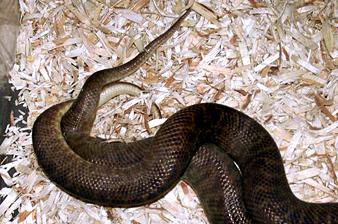
- Basking in the typical for pythons inverted position.

- More basking - this time I supplied the nesting box with moist sphagnum moss inside.
The female will shed one last time before laying eggs - this happens usually exactly 20 days before oviposition.

- More basking - this time some weird positions. Supposingly this is how the female
manipulates the eggs making them ready for trouble-free oviposition.

- April 9, 2006 - 14 fertile eggs laid, exactly on the 20th day after shedding.
The 20 day rule, although really accurate most of the time for pythons, is a guideline only.
It can happen a day or two later though, like for example one of my Irian Jaya carpet pythons
had her eggs on the 23rd days after shedding. Nowerthless, it greatly helps to pin-point the time when
to expect the eggs, and this way makes lives of the snake breeders easier.

- Now in the incubator, temperature around 88 - 90 F and high humidity.
They should hatch at the end of May.
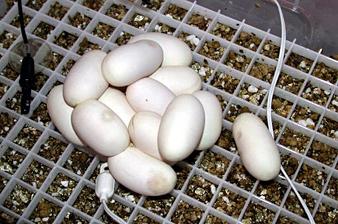
-
The incubator - a 20 gallon insulated aquarium. Bottom filled with few inches of water, egg crate on a block of concrete to
make a shelf for the container with the eggs. The temperature is maintained with a submersible aquarium heater with a thermostat and a simple
pump installed for the water to circulate. The right humidity is maintained just by having the incubator sealed off -
you can see condensation on all the walls at any time. I open it once a day to check on the eggs and let some fresh air in.
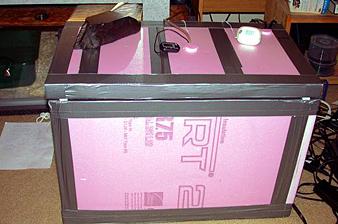
-
Here - I decided to do some candling to make sure all eggs are viable, and they are ! You can clearly see the blood vessels in them. I will do next
candling in few weeks in hopes to see the embryos developing.
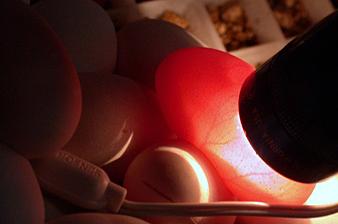
-
Another shot at candling.
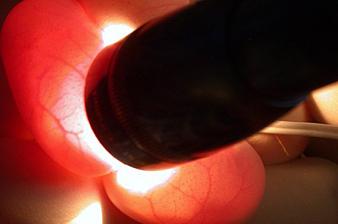
-
The eggs dimple about 2/3rds into incubation. These started on the 11th of May, which means they should hatch around the 23rd ( day 45 ).
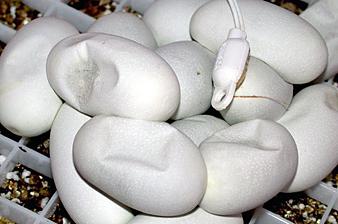
-
May 22, 2006 - they are hatching ! The first egg pipped - see the slit in the egg in the middle of the centre of the egg mass. Although all the eggs have been obviously kept under the
same conditions, perhaps the one in the centre had the most stable environment - which could relate to the little snake slit the shell
first. You can see the little head poking from the egg ! The rest should be emerging within the next 24 hours.

-
May 23, 2006 - the first snake left the egg. Here it is, right after moving it from the incubator to
the babies enclosure, in which all of them will stay till their first shed. By now 50% of the snakes have
pipped through the shells. To help them a little, I manually pipped the rest of the eggs. All baby snakes should
hatch by tomorrow night.
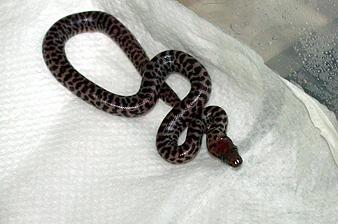

-
Pipped eggs waiting for the snakes to hatch. I used small curved scissors to pip the remaining eggs manually.
You can see the little pythons inside the eggs - whenever approached they try to hide by withdrawing back deeper into the egg.
All 14 snakes seem healthy and energetic, which translates into 100% hatch rate !
The egg in the centre is empty - this one used to be home to the first hatchling pictured above. :)))
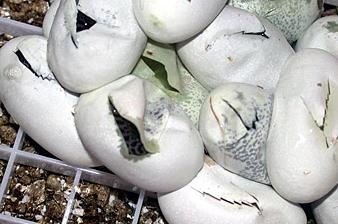
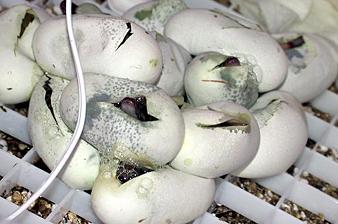
-
May 25, 2006 - all the pythons have hatched by now. There are 14 healthy babies. They all weigh 132 grams together, so it makes
one to be about 6.5 grams. Below, all of them in a container, collected from the incubator, before moving them to the babies enclosure.

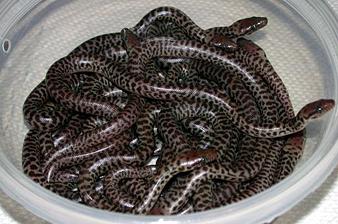
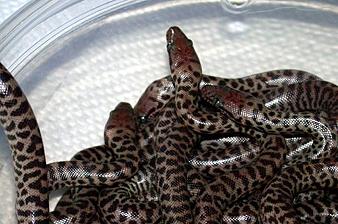
-
Here, all babies cuddled up together in the babies enclosure. I keep them there together on wet towel paper until
they shed in 7 to 10 days, and then move them to their seperate plastic bins.
(this is this year's clutch - babies born on the 28th of April 2007; it took 44 days to incubate them and 3 days afterwards for all of them to hatch.
)
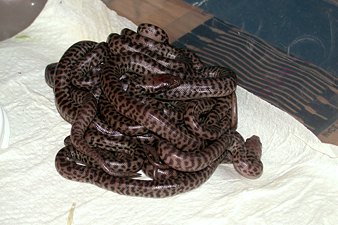
|
Available pet snakes  |
 None at the moment None at the moment
All 2006 babies are sold! The next breeding season has started and my snakes are mating. Next year I will be
expecting ball pythons, Irian Jaya carpet pythons, Dumeril's boas, blood pythons, Children's pythons,
Kenyan sand boas, spotted pythons and perhaps some others. For availability, check me out often!
|
|
|

